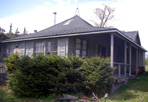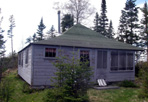-Crystal_Cove.jpg)
Barnum Island Camps
Washington Harbor
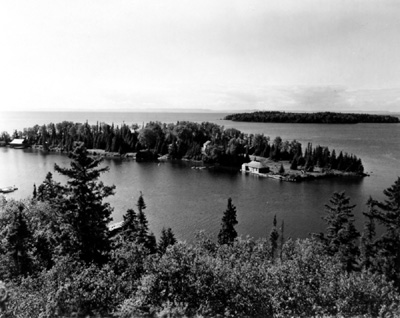
Barnum Island, Jon Abrams, 1966: [NVIC: 60-542], ISRO Archives.
he Barnum Island-based camps, or "Colony", have a high degree of integrity, and was one of the earliest recreational developments on Isle Royale. Barnum Island retains seventeen historic structures: six residential cottages, (not including the Johns Hotel, and Johns log cabin), four privies (not including the Johns double privy), two boathouses, a woodshed, and a smoke house. A communal dining room located near the old Johns Hotel is no longer extant. Most of the structures are in good condition, and are associated with millionaire George Barnum's private resort. Two buildings, the Johns' Hotel (#351) and the double privy (#851A) date to the early 1890s, and are significant as the first Isle Royale resort development, and have been nominated to the National Register. The Johns' log cabin (#343) and Andrews small log cabin (#345) were originally associated with John F. Johns and also date to the early 1890s, but the Andrews small log cabin was later incorporated into Barnum's private resort and used as a cottage.
George Barnum was one of the first to establish his own private resort on Isle Royale. Barnum, a millionaire grain merchant from Duluth, first visited the island in 1895. On a visit in 1889, he stayed at the John's Hotel, and on subsequent visits stayed in a cottage at the west end of the island. Before Barnum bought the island from Johns, he requested that Johns and his son build him a small cabin, which Barnum used for a few years with his family. After the sale of the island in 1902, a larger cabin was built for Barnum on the western end of the island. Barnum then invited several friends to have their own cabins built, using his carpenter, Ole Daniels of Duluth. Within a few years the island had cabins for the Andrews, Ray, and Dunwoodie families. A common dining room was built near the old John's log cabins at the eastern end of the island. Barnum Island had become a busy (private) summer resort by the 1920s.
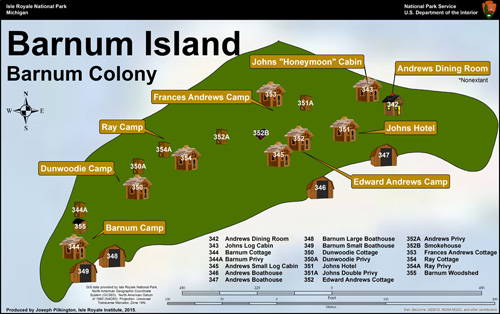
Download Map: JPEG (3.34MB) | PDF (1.64MB)
Barnum's hired carpenter, Ole Daniels, built most of the frame structures on the island. Five of these were built between 1903 and 1905: the Barnum cottage (#344), woodshed (#355), and privy (#344A); and the Dunwoodie cottage (#350) and privy (#350A). During the 1920s, Daniels built five additional buildings for Barnum: the Ray cottage (#354) and privy (#354A), and the two Andrews' cottages (#352 and #353) and privy (#352A). George Barnum designed both boathouses-the 1910 large boathouse (#348) and the 1933 small boathouse (#349).
The five frame residential cottages are all approximately the same size, approximately 32' x 32' (1024 sq. ft.), with the Barnum cottage being slightly larger at 34' x 36' (1296 sq. ft.). Buildings have six-light casement windows, and the Dunwoodie cottage (#350) has a stained-glass window in the attic gable.
Most of the structures within the Barnum resort show a uniformity of design, materials, and workmanship, excluding the earlier John's structures, which are horizontal notched log construction. Even the Privies are uniform in design: all four associated with the Barnum resort have gabled roots, droplap siding with cornerboards, and four-panel doors with black glass doorknobs. The resort cottages also display a continuity of design and materials, and are all one-story, have either pyramidal flared hip roots or low-pitch gabled-roots with gabled dormers, and are all roofed with rolled asphalt. Many buildings are sheathed with droplap siding with cornerboards. The only building that deviates from the use of droplap siding is the Large Boat House, which is vertical log construction. In contrast, the Small Boat House is sheathed in the droplap siding, and does not match the larger structure.
The Barnum resort is the only private resort colony on Isle Royale, and represents the early private resort and recreational development at the turn of the century. It is illustrative of a summer private resort developed by a wealthy Isle Royale summer resident, and its structures convey the original configuration, design, materials, and workmanship that show the hand of one craftsman. The survival of the Johns' Hotel and other related log buildings gives the site further importance as the earliest Isle Royale resort.
Barnum Camp
Dunwoodie Camp
Ray Camp
Andrews' Camps
Help Tell The Story
Are you related to this family? Would you be willing to share stories or photos associated with related events? If so, we would love to hear from you! Please contact the Cultural Resource Manager at Isle Royale National Park. Or write to:

800 East Lakeshore Drive
Houghton, Michigan 49931-1896
906-482-0984
Citations
- Franks, Kathryn E. and Arnold R. Alanen, 1999. Historic Structures at Isle Royale National Park: Historic Contexts and Associated Property Types. Department of Landscape Architecture, University of Wisconsin-Madison, January 1999.
- Newland, Dave. 2003. Executive Summary of the Barnum Life Lease. Isle Royale National Park. Houghton, MI.
--1938.jpg)
--1938.jpg)
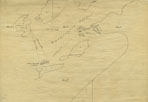
![Washington and Barnum Islands, J. Raftery, 1964: [NVIC: 60-227], ISRO Archives.](../../Washington_Harbor/Barnum/Jpegs/Small/NVIC-60-227.jpg)
![Barnum Island, Jon Abrams, 1966: [NVIC: 60-542], ISRO Archives.](../../Washington_Harbor/Barnum/Jpegs/Small/NVIC-60-542.jpg)
![Barnum Log House, 1935: Wolbrink [Sheet 039, Photo D], ISRO Archives.](../../Washington_Harbor/Barnum/Jpegs/Small/Wolbrink_Photos_Sheet_039d.jpg)
![Barnum Cottage (#344), 1935: Wolbrink [Sheet 040, Photo A], ISRO Archives.](../../Washington_Harbor/Barnum/Jpegs/Small/Wolbrink_Photos_Sheet_040a.jpg)
![Barnum Cottage (#344), Hakala, 1952: [NVIC: 50-208], ISRO Archives.](../../Washington_Harbor/Barnum/Jpegs/Small/NVIC-50-208.jpg)
![Barnum Cottage (#344), Hakala, 1952: [NVIC: 50-246], ISRO Archives.](../../Washington_Harbor/Barnum/Jpegs/Small/NVIC-50-246.jpg)
![Barnum Dining Hall, 1935: Wolbrink [Sheet 039, Photo C], ISRO Archives.](../../Washington_Harbor/Barnum/Jpegs/Small/Wolbrink_Photos_Sheet_039c.jpg)
![Barnum Dock, 1935: Wolbrink [Sheet 039, Photo A], ISRO Archives.](../../Washington_Harbor/Barnum/Jpegs/Small/Wolbrink_Photos_Sheet_039a.jpg)
![Barnum Boathouses and Docks (#348 & #349), 1935: Wolbrink [Sheet 040, Photo B], ISRO Archives.](../../Washington_Harbor/Barnum/Jpegs/Small/Wolbrink_Photos_Sheet_040b.jpg)
![Barnum's Small Boathouse (#349), Hakala, 1952: [NVIC: 50-247], ISRO Archives.](../../Washington_Harbor/Barnum/Jpegs/Small/NVIC-50-247.jpg)
![Barnum's Large Boathouse, Hakala (#348), 1952: [NVIC: 50-248], ISRO Archives.](../../Washington_Harbor/Barnum/Jpegs/Small/NVIC-50-248.jpg)
![Barnum - Captain Cottage - Grace Island, 1935: Wolbrink [Sheet 042, Photo C], ISRO Archives.](../../Washington_Harbor/Barnum/Jpegs/Small/Wolbrink_Photos_Sheet_042c.jpg)
![Barnum - Fisherman's Cottage - Grace Island, 1935: Wolbrink [Sheet 042, Photo D], ISRO Archives.](../../Washington_Harbor/Barnum/Jpegs/Small/Wolbrink_Photos_Sheet_042d.jpg)
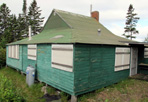
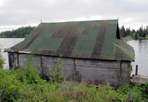


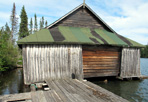
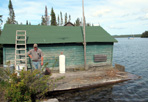
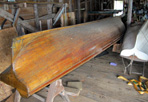
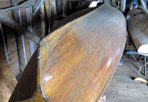
![Dunwoodie Cottage (#350), 1935: Wolbrink [Sheet 046, Photo C], ISRO Archives.](../../Washington_Harbor/Barnum/Jpegs/Small/Wolbrink_Photos_Sheet_046c.jpg)
![Dunwoodie Cottage (#350), Hakala, 1952: [NVIC: 50-249], ISRO Archives.](../../Washington_Harbor/Barnum/Jpegs/Small/NVIC-50-249.jpg)
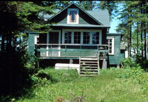
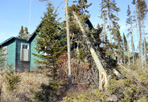
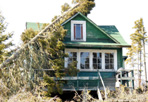
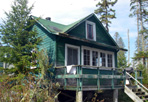
![Ray Cottage (#354), 1935: Wolbrink [Sheet 046, Photo B], ISRO Archives.](../../Washington_Harbor/Barnum/Jpegs/Small/Wolbrink_Photos_Sheet_046b.jpg)
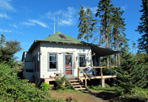
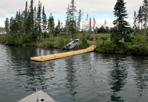
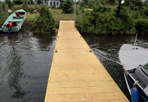
![Edward Andrews Cottage (#352), 1935: Wolbrink [Sheet 045, Photo C], ISRO Archives.](../../Washington_Harbor/Barnum/Jpegs/Small/Wolbrink_Photos_Sheet_045c.jpg)
![Edward Andrews Cottage (#352), Hakala, 1952: [NVIC: 50-244], ISRO Archives.](../../Washington_Harbor/Barnum/Jpegs/Small/NVIC-50-244.jpg)
![Arthur Andrews Cottage (#353), 1935: Wolbrink [Sheet 045, Photo D], ISRO Archives.](../../Washington_Harbor/Barnum/Jpegs/Small/Wolbrink_Photos_Sheet_045d.jpg)
![Arthur Andrews Boathouse, 1935: Wolbrink [Sheet 039, Photo B], ISRO Archives.](../../Washington_Harbor/Barnum/Jpegs/Small/Wolbrink_Photos_Sheet_039b.jpg)
![Andrew's Cottage, Hakala, 1952: [NVIC: 50-207], ISRO Archives.](../../Washington_Harbor/Barnum/Jpegs/Small/NVIC-50-207.jpg)
![Andrews Boathouse, Hakala, 1952: [NVIC: 50-242], ISRO Archives.](../../Washington_Harbor/Barnum/Jpegs/Small/NVIC-50-242.jpg)
![Andrews Boathouse, Hakala, 1952: [NVIC: 50-243], ISRO Archives.](../../Washington_Harbor/Barnum/Jpegs/Small/NVIC-50-243.jpg)
![Andrews Dining Room, Hakala, 1952: [NVIC: 50-245], ISRO Archives.](../../Washington_Harbor/Barnum/Jpegs/Small/NVIC-50-245.jpg)
